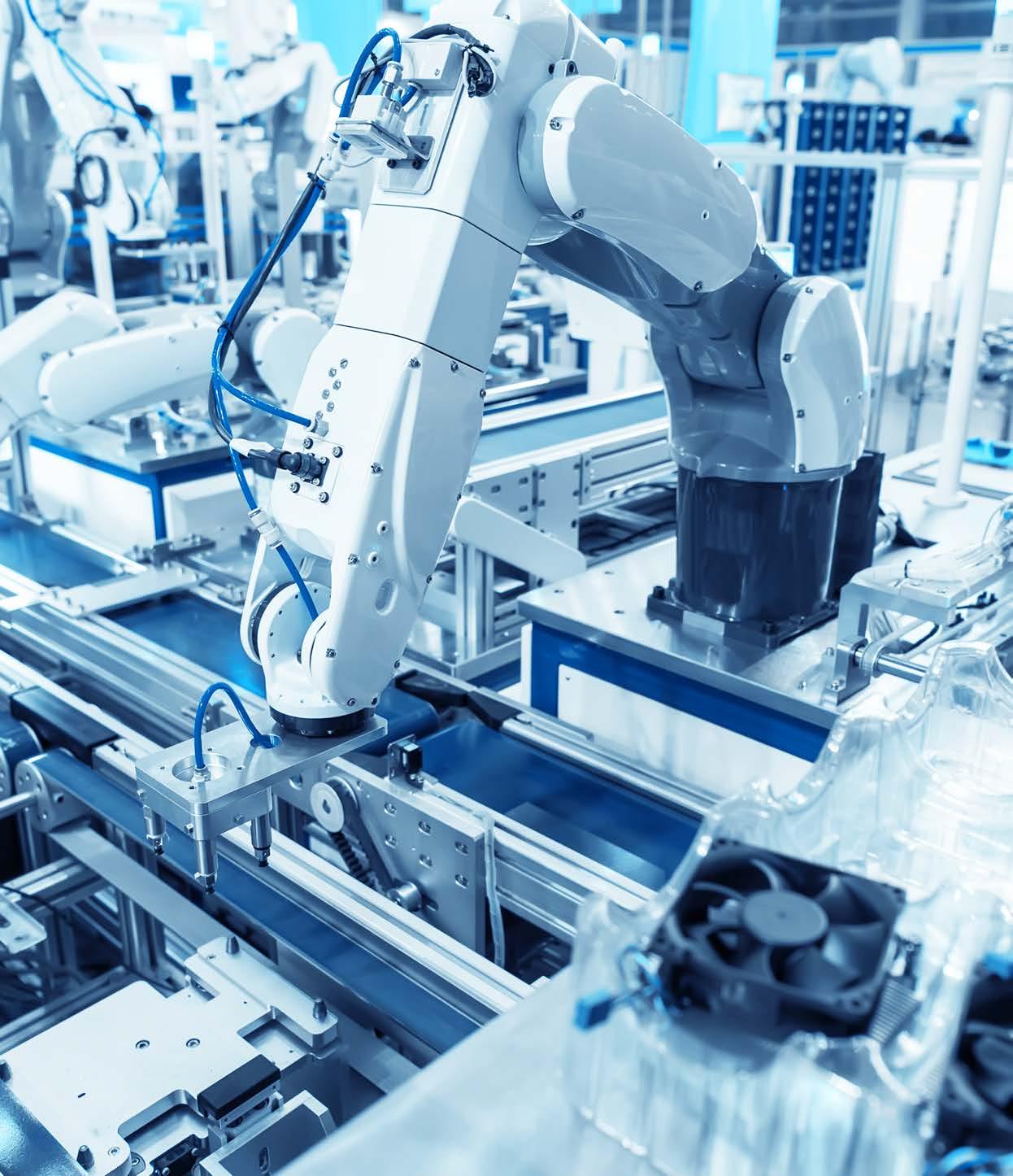
1 minute read
Robots: the next generation
If the pages of science fiction can claim credit for any real-life technology, then it’s the industrial robot. Since the word famously first appeared in 1921, in writer Karel Capek’s play R.U.R. (Rossum’s Universal Robots), deriving from the Czech for “forced labour”, robots have come a long way. They are today used in welding, painting, assembly and pick and place applications across a variety of industries.
Robots are not quite like “forced labour”, of course, although robots and humans are forced to work hand in hand – in a good way. Each year, robots and collaborative robots are shown to enhance the work of humans. Industrial robots are running more production systems with their high endurance, speed and precision; while humans can devote more of their skills for strategic thinking, invention and detail. Robots have evolved a great deal since the days of the large, cumbersome automatons seen on General Motors’ production lines in the 1960s. But where do they fit into today’s Industry 4.0 landscape, the era of automation and data exchange that continues to transform manufacturing technologies and processes?
Advertisement
This expert report explores the answer, looking at the evolution of robots and what we expect to see in their next generation. SMC is proud to say that our innovative, compact, lightweight and enduring robot components are crucial to this. Tomorrow’s robots will offer flexibility and bespoke capabilities that the earliest models couldn’t. They will be integral to realising the industrial demands for smart factories, flexible and modular interconnectivity, and more powerful and reliable wireless connectivity on the factory floor.
“ SMC has always been an innovator in developing compact and lightweight products. Our components and standard, special or complete tailor-made solutions are used in all areas of industry - handling, pick and place, painting or welding applications. ” Zdenek Velfl, Business Consultant CZ & SK, SMC Industrial Automation CZ s.r.o.









